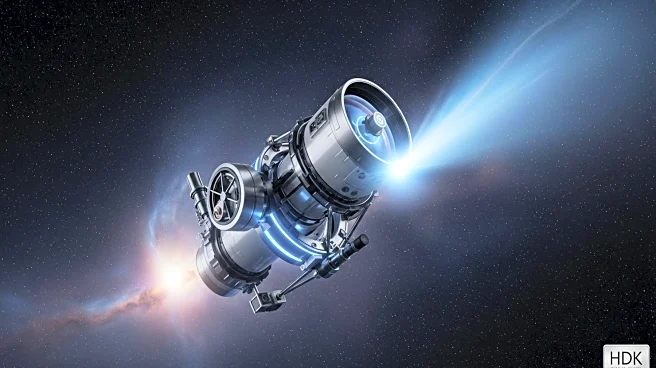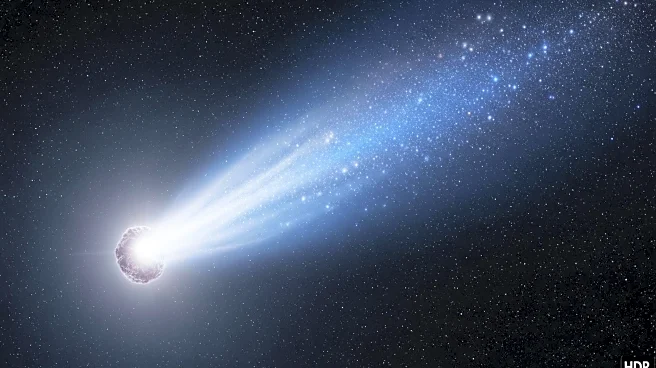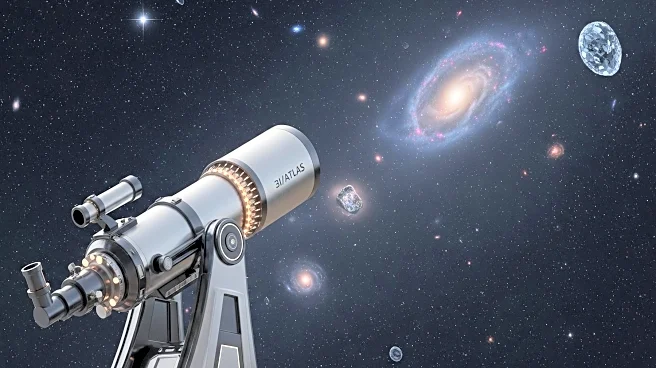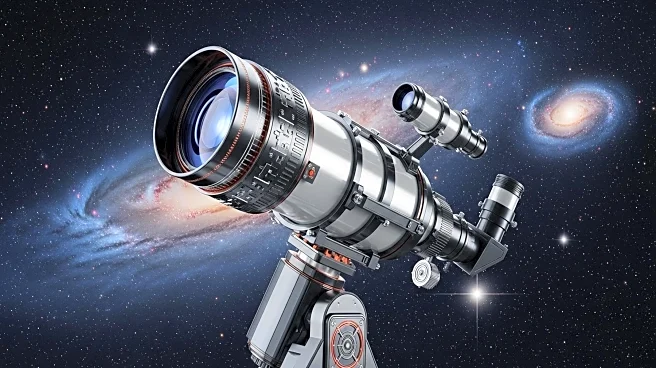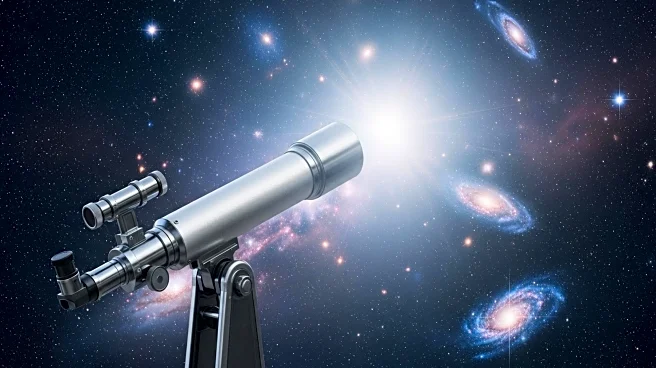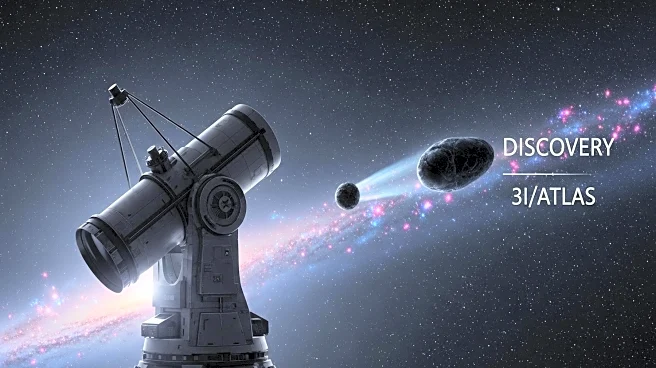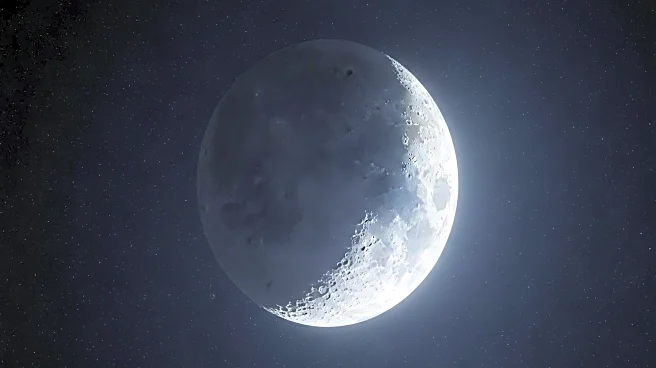What's Happening?
NASA's James Webb Space Telescope has conducted observations of the interstellar comet 3I/ATLAS using its Near-Infrared Spectrograph instrument. The data collected is being analyzed by a research team, with preliminary findings available online. This effort is part of NASA's broader mission to study solar system objects, with other telescopes like the Hubble Space Telescope and the SPHEREx mission also contributing to the research. The comet, which poses no threat to Earth, is being studied for its size, physical properties, and chemical composition.
Why It's Important?
The study of interstellar comet 3I/ATLAS is significant as it provides scientists with valuable information about objects that originate outside our solar system. Understanding the chemical makeup and physical characteristics of such comets can offer insights into the formation and evolution of celestial bodies. This research supports NASA's ongoing efforts to track and understand solar system objects, which is crucial for planetary defense and advancing our knowledge of the universe.
What's Next?
Further analysis of the data collected by the Webb Space Telescope and other instruments will continue, potentially leading to new discoveries about interstellar comets. The findings could influence future missions and research priorities in the field of astronomy, as scientists seek to deepen their understanding of these ancient cosmic travelers.
Beyond the Headlines
The study of interstellar comets like 3I/ATLAS may have implications for our understanding of the origins of life and the distribution of organic compounds in the universe. As researchers uncover more about these objects, they may also explore the ethical and philosophical questions surrounding humanity's place in the cosmos.
